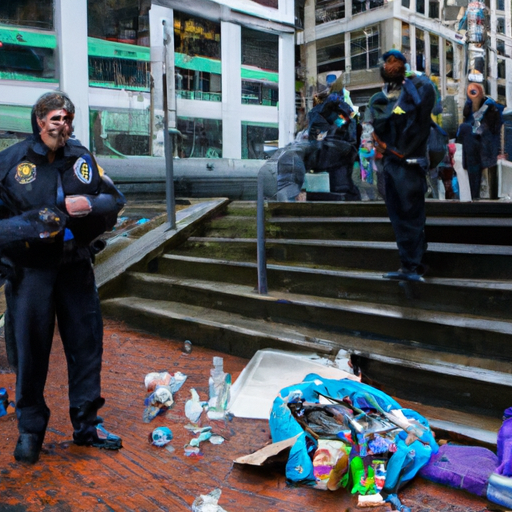Unveiling The Canadian Opioid Crisis: A Critical Look at Law Enforcement’s Role in Vancouver
In an effort to continue the conversation about the ongoing opioid crisis in Canada, we turn our focus today to British Columbia (Vancouver Police Department’s Deputy Chief Howard Chow’s recent statement) on how the opioid crisis, coupled with homelessness and crime, is influencing community safety and health.
The Opioid Crisis: A Snapshot of the Situation
The opioid crisis has been declared a public health emergency in British Columbia for several years now. The province is grappling with an unprecedented number of opioid-related overdoses and deaths. And all the while, the scourge of opioids continue to ripple far beyond health crises affecting the economy, social stability, crime rates, and trust in law enforcement.
In an address to the public, Deputy Chief Howard Chow made a startling revelation: a significant quantity of opioids intended for safe supply programs to combat the opioid crisis are being diverted elsewhere. This critical issue deserves our undivided attention.
Impact on Homeless Populations and Crime
A striking correlation exists between opioid abuse, homelessness, and crime. Deputy Chief Chow illustrated this connection, pointing out that homeless individuals are not only victims of the opioid crisis but also partly responsible for a surge in Vancouver’s petty crimes. This distressing trend is underscored by the displacement of marginalized persons from Oppenheimer Park due to crime, placing further strain on already pressed police resources.
Efforts Against the Opioid Crisis
While the diversion of safe supply opioid medications presents a challenge, Vancouver’s law enforcement, city officials, and healthcare providers are tirelessly working to confront the crisis. By increasing the availability and knowledge of naloxone kits, efforts are underway to reduce the risk of opioid-related deaths.
The Role of Safe Supply Programs
Despite the concerning reports of diversion, it is essential to underline the crucial role that safe supply programs play in controlling the opioid crisis. These programs are designed to provide patients with a safer, regulated alternative to dangerous street opioids.
Key Takeaways from Deputy Chief Chow’s Remarks:
- Opioids meant for safe supply programs are being diverted, contributing to the ongoing opioid crisis.
- There’s a seemingly indissoluble connection between opioid addiction, homelessness, and crime rates in Vancouver.
- The displacement of the homeless population, particularly from Oppenheimer Park due to crime, strain police resources further.
- Vancouver’s law enforcement, including the deployment of naloxone, is taking active measures to combat the crisis.
- Safe supply programs, while currently facing challenges, are integral in controlling the crisis.
Conclusion
The Canadian opioid crisis, especially as it plays out in the nexus of homelessness and crime, presents significant challenges for Vancouver’s communities. Deputy Chief Chow’s revelations about the diversion problem highlight the urgent need for more robust, comprehensive strategies that encompass law enforcement, public health, housing solutions, and community resources to more effectively address the gravity of the situation.
Combined interventions such as drug supply regulations; drug use prevention and education; increased deployment and education around naloxone; and improvement in community-based resources can represent tremendous breakthroughs in resolving parts of this crisis. However, these initiatives need political will and public backing to make a substantive success.
As we navigate the complexities of the opioid crisis, it becomes evident that tackling it requires a multifaceted approach — one that exemplifies collaboration among various stakeholders, sensitivity to the realities of those battling opioid addiction, and an unwavering commitment to safeguarding community health and safety.
